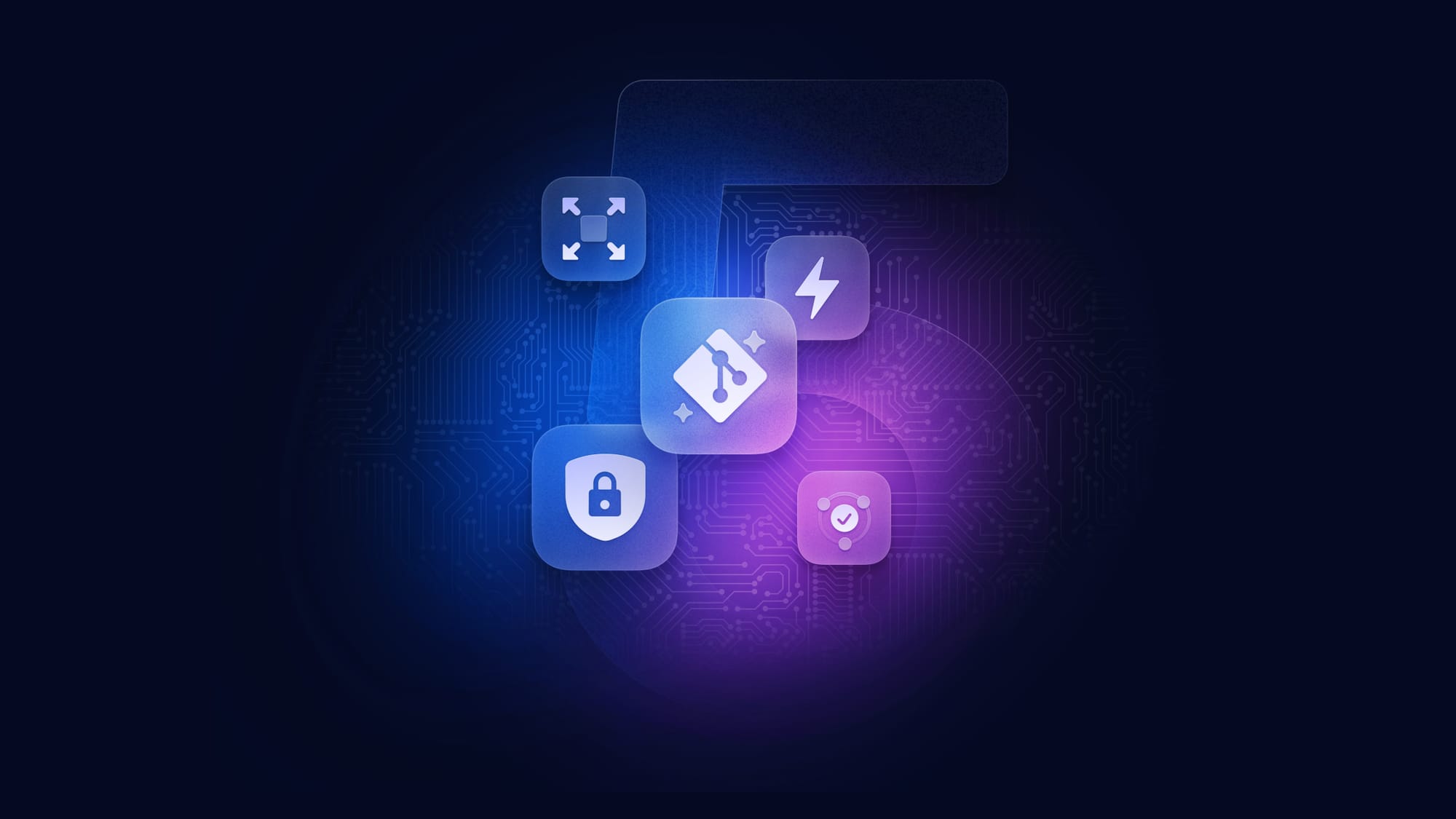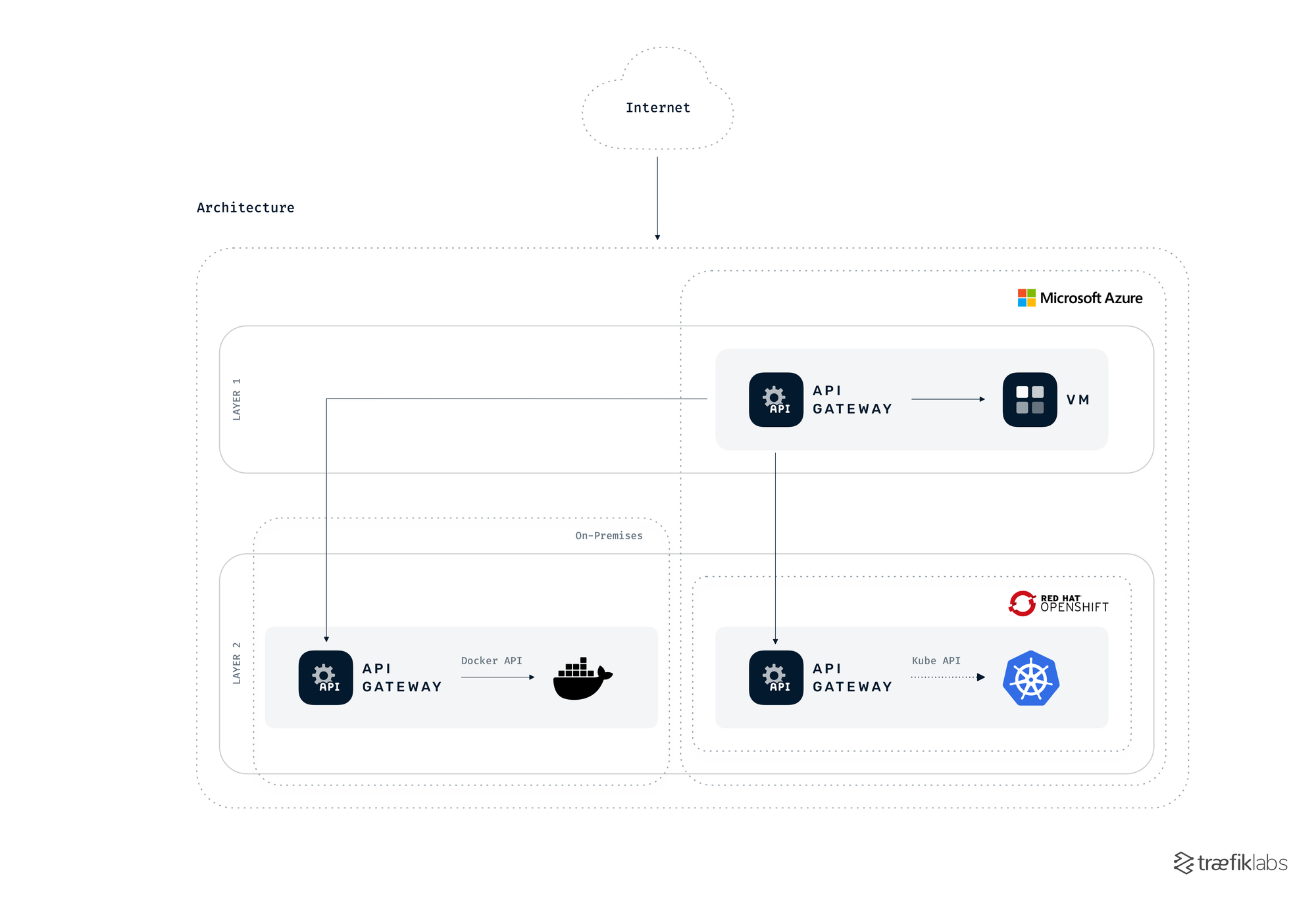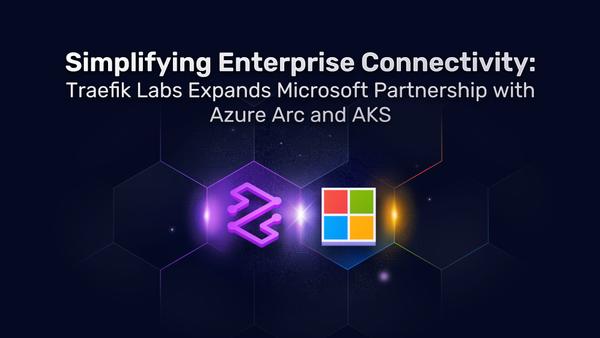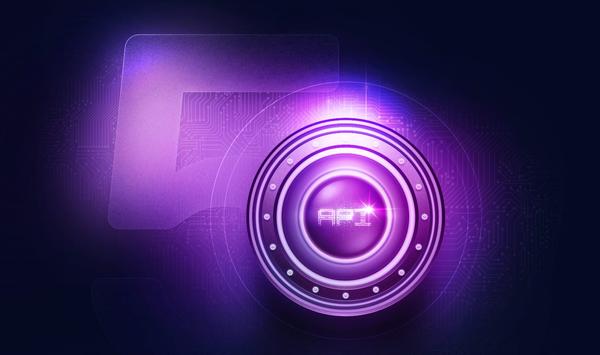5 Essential Qualities All API Gateways Need in 2024

In the constantly evolving digital landscape, APIs are the connective tissue that powers modern applications. A well-designed API gateway acts as the central nervous system for your API ecosystem, streamlining access, management, and security. But with the rapid pace of innovation, simply having an API gateway isn't enough. In 2024, you need a modern API gateway to stay ahead of the curve and not be left behind in the digital stone age.
Let’s explore the five essential features your API gateway must possess to empower your developers, elevate security, and maximize business agility. We'll explore simplicity and ease of use, container orchestration integration, security features, extensibility, and embracing GitOps principles for declarative configuration. With these at the top of your evaluation criteria, you'll be better equipped to select the perfect API gateway for your organization's needs.
#1 Simplicity and Ease of Use are The Cornerstone of Agility
Developers are your key partners. A modern API gateway should prioritize developer experience (DX) by offering a clean, intuitive interface and a robust set of tools, ensuring they can navigate, configure, and deploy APIs and microservices without unnecessary friction. This translates to:
- Reduced learning curve: A convenient user interface and clear documentation enable developers to grasp the API gateway's functionalities quickly, minimizing onboarding time and maximizing productivity. Note that a user interface doesn’t necessarily mean a clickable UI; it can also be any interface that allows configuration.
- Streamlined development: Powerful tools for defining routes, security policies, and request or response modification should be readily available along with automation, allowing developers to focus on business logic rather than getting bogged down in configuration.
- Rapid prototyping and iteration: Simplicity fosters agility. The ease of publishing and modifying APIs within the gateway empowers developers to prototype and iterate, accelerating innovation and time-to-market rapidly.
Here are two real-world examples: Axione, a French telecommunications company, leveraged a user-friendly API gateway to save countless hours every month by reducing configuration updates in multiple clusters to just a few minutes with zero downtime. ABAX, a multi-national IoT (internet of things) company, spends very little time training people. They give them the basic understanding they need and then move on. Saving so much time, like these companies, can also allow you to capitalize on a critical market window that might never come again.
But simplicity extends beyond developer efficiency. A modern API gateway should also champion:
- Faster time to change: Configuration changes should be straightforward and easily rolled out, minimizing downtime and disruption during updates. Imagine a scenario where a critical bug fix needs immediate deployment. A modern, streamlined API gateway enables this with minimal hassle.
- Rapid disaster recovery: In the event of an outage, a modern API gateway with predictable configuration rollback features allows for swift restoration, ensuring business continuity and minimizing revenue loss. According to the trusted DORA metrics, companies with high, on-demand deployment frequency can minimize the change-failure rate to only 5% and recover from a failure in less than 1 hour (which can still cost businesses an average of $9,000 per minute, so you should cut it down as much as possible). Since the industry average for recovery is between a day and one week, a speed like this can put you at the top performing 20%, minimizing customer impact and protecting your brand reputation.
Finally, a modern API gateway shouldn't burden developers with tedious configuration tasks. Here's where features like the following help:
- Sane defaults: Out-of-the-box configurations catering to common use cases minimize manual setup and avoid divergence from industry best practices.
- Auto-discovery of services: Modern API gateways can automatically detect and integrate with backend services, saving developers valuable configuration time.
- Scalability and high availability: The gateway should seamlessly scale to accommodate traffic spikes and ensure continuous API access, freeing developers from infrastructure concerns and allowing them to focus on building exceptional applications.
While many API gateways exist, some fall short on simplicity and ease of use. Avoid UI-heavy solutions because a complex, cluttered user interface can hinder developer productivity. Some API gateways on the market even require navigating a labyrinth of menus and options just to perform basic configurations.
Don’t frustrate your developers, nor waste their time! Also, beware of manual drudgery and gateways without auto service discovery. Manually configuring every backend service integration can be a tedious and error-prone process, especially for large deployments.
#2 Embrace the Container Revolution with Native Integrations
The landscape is shifting. Bare-metal deployments and virtual machines (VMs) are giving way to cloud-native architectures built on containerization. But considering cloud migration doesn’t happen overnight, modern API gateways need to be able to handle both legacy and cloud-based workloads.
Deep container orchestration integration, first and foremost, means Kubernetes. Kubernetes reigns supreme in the container orchestration realm. A modern API gateway should seamlessly integrate with Kubernetes, allowing you to leverage its powerful features for service discovery, load balancing, and health checks. This simplifies API deployment and management within your containerized environment.
But what about beyond Kubernetes?
- A truly modern API gateway shouldn't limit you. It should offer first-class support for other cloud-native orchestrators like Docker Swarm and HashiCorp Nomad, ensuring flexibility for your specific infrastructure needs.
- Modern applications often leverage a diverse set of backend services; furthermore, many organizations operate in hybrid environments, with a mix of on-premises infrastructure and cloud deployments. A modern API gateway should bridge this gap and be able to serve APIs from many sources simultaneously. It should seamlessly expose APIs residing on-premises and across various cloud providers and Kubernetes distributions. This flexibility empowers you to manage your entire API ecosystem from a single pane of glass.
Effective traffic routing is crucial for application performance and user experience to support all this complexity. A modern API gateway acting as the central hub for all your API traffic should offer intelligent routing capabilities, allowing you to route requests based on various factors like hostname, path, HTTP method, request headers, JWT claims, or even a mix of all these. This granularity empowers you to deliver the right service to the right user at the right time, optimizing performance and security.
To give you a real-life example, AmeriSave, a mortgage company in the financial services industry, faced similar challenges as they were migrating from an on-premises monolith to a cloud-based microservices architecture. They needed to keep APIs online from both systems during the transition. A flexible, multi-orchestrator API gateway helped them to make this happen and have a smooth and consistent process.

However, not all integrations are created equal, you should avoid pitfalls while working in the field. While container orchestration offers numerous advantages, some API gateways fall short in this area. Watch out for:
- Limited Kubernetes capabilities: While some API gateways might offer a basic Kubernetes integration or can be run inside Kubernetes, true interoperability is key. Avoid API gateways that lack robust Kubernetes features like service discovery, health checks, and Kubernetes-native CRDs (Custom Resource Definition) to declare configuration, as these will only increase the manual configuration burden and potential for human error. Many solutions were born before Kubernetes or even the cloud-native era, so they lack this critical capability.
- Cloud vendor lock-in: Beware of API gateways restricting you to a specific cloud provider's (Kubernetes) offering. A modern API gateway should be cloud-agnostic, supporting various Kubernetes distributions across multiple cloud providers. This flexibility ensures you're not locked into a single vendor and can adapt to your evolving needs.
- Orchestration singularity: While Kubernetes is the leader, some situations can leverage other orchestrators, and vice versa, one single non-Kubernetes orchestrator support is also not enough. Make sure your API gateways don’t limit you to just one or two environments. Instead, seek one that offers broader support for various container orchestration platforms to make your containerization strategy future-proof.
These are just a few cautionary tales. Remember, a modern API gateway should empower you to build and deploy APIs that align with your unique infrastructure and business situation.
#3 Protecting Your APIs in a Hostile World
Security is non-negotiable in a world marked by relentless cyber threats and strict regulatory requirements. A modern API gateway must serve as the vanguard of your digital fortress, offering a comprehensive suite of security features to safeguard your data, services, and reputation.
- Secure a wide range of protocols easily: Modern APIs leverage diverse protocols. A robust API gateway should secure these protocols uniformly at a centralized point. This includes common protocols like HTTP, TCP, UDP, WebSockets, and even gRPC. Centralizing security policies can streamline management and ensure consistent protection across your entire API ecosystem.
- Authentication and authorization: The bedrock of any secure API ecosystem lies in robust authentication and authorization mechanisms to control who can access what. A modern API gateway should offer a robust arsenal of options, including industry standards like API keys, LDAP, JWT (JSON Web Tokens), OAuth2, OIDC (OpenID Connect), and HMAC (Hash-based Message Authentication Code). Implement the most suitable authentication mechanisms for each API, ensuring untrusted actors can’t misuse them.
- Effective traffic management: This is essential for optimizing performance, enhancing resilience, and ensuring a superior user experience. A feature-rich API gateway facilitates advanced traffic management capabilities, including:
- Traffic mirroring—troubleshooting and security analysis
- Blue/green and canary deployments—safely roll out new API versions with minimal risk
- Session stickiness—maintain user sessions with specific upstream backends
- Active health checks—continuously monitor the health of backend services and ensure API uptime SLAs
- Circuit breakers—protect against cascading failures
- Retries and buffering—enhance API resilience towards temporary network issues
- Distributed in-flight request and rate limiting—evade denial-of-service attacks.
- Built-in Let's Encrypt support: Securing communication channels with Transport Layer Security (TLS) is a non-negotiable security best practice. Let’s Encrypt is the most well-known ACME (Automated Certificate Management Environment) compatible TLS certificate authority. A modern API gateway should offer built-in ACME/Let's Encrypt support, simplifying the process of obtaining and managing TLS certificates. This aligns with the esteemed Electronic Frontier Foundation's (EFF) recommendation to leverage tools like Traefik that offer integrated support for certificate automation, moving away from external tools like Certbot.
Without such robust features, Leroy Merlin, a home improvement and gardening retailer, couldn’t have made it "effortless to manage" 50 clusters in parallel securely. With other API gateways, the team would expend time building and maintaining certificates with CertManager or other external tools requiring maintenance, expertise, and attention.
Beware of API gateways that offer a limited security feature set. While they might provide basic functionalities, advanced capabilities like fine-grained security policy enforcement might be missing. This can leave your APIs vulnerable to sophisticated attacks. You can also encounter API gateways that offer robust security features but are limited to a specific orchestration platform. You must not compromise on security and must be able to leverage best-of-breed security solutions across your entire infrastructure.
Remember, security is an ongoing process that requires constant adaptation. Stakes are high, and threats are widespread—avoid gateways that restrict customization and extensibility options to tailor security measures to your specific needs.
#4 Embrace Extensibility for a Future-Proof API Gateway
Meeting your current needs is nice, but a modern API gateway must also evolve alongside your organization's growth and changing requirements.
Imagine you're stuck in a walled garden. You can still move around, but it's hard to get out. Vendor lock-in is similar. The vendor creates a system where switching to another provider is inconvenient and costly, and you must move at the pace the vendor lets you by shipping new features according to their roadmap, not yours. For this reason, it’s best to avoid API gateways that lock you into a specific vendor's feature set. Extensibility empowers you to integrate best-of-breed solutions and customize your API gateway to meet your unique needs when needed.
- A rich plugin ecosystem is a hallmark of a modern API gateway, amplifying its versatility. Built-in plugins can extend core functionalities, while the ability to create custom plugins allow you to address specific use cases. Security is a prime example. Custom plugins can be leveraged to fortify the gateway with advanced security features like a Web Application Firewall (WAF).
- WebAssembly (Wasm) has emerged as a game-changer in extensibility. By supporting WASM-based plugins, an API gateway opens the door to a world of possibilities, enabling portable, lightweight, high-performance customization without sacrificing security or efficiency. This opens the door to a vast array of innovative plugins that can extend the gateway's capabilities in unprecedented ways.
- Open-source development fosters innovation and rapid improvement. An API gateway and a plugin ecosystem built on open-source foundations driven by a passionate community ensures continuous feature enhancements and a future-proof platform. You can also contribute and receive feedback and improvements to your added functionality from the community.
Did you know that Traefik has recently joined OWASP, a well-known non-profit organization focused on improving software security, particularly web application security? OWASP is endorsing the use of the Coraza WAF, which is the successor to ModSecurity-based WAF solutions. Traefik v3 adds support for Coraza as a Wasm-based WAF plugin, created by a community member who is, in fact, the author of the Coraza WAF. What a great example of the opening three points working together!
A modern API gateway with WAF integration empowers you to leverage industry-leading protection mechanisms to safeguard your APIs against sophisticated attacks. This is made possible by the power of extensibility, allowing you to integrate best-in-class security solutions as they become available on the market, not by relying on the vendor's mercy to add them when they feel like it.
Vendor lock-in is also a barrier to observability. A modern API gateway should embrace OpenTelemetry, an industry standard for collecting and analyzing API metrics, traces, and logs. This empowers you to get comprehensive insights into your API ecosystem's health and performance not just from one vendor-specific tool but any compatible tool, even your existing monitoring tools if they support the standard.
What are the signs that your API gateway is failing in these areas?
- Some gateways rely on Lua or C-based extensions. While these programming languages have their place, working with them can be cumbersome. Compiling the gateway from source code for even basic extensions adds unnecessary complexity and hinders development agility.
- Also, beware of gateways that lock essential features behind a paywall, such as analytics, which should be core offerings in a modern API Gateway.
- While WASM promises extensibility and allows you to leverage the language that best suits your development team's expertise, resource consumption remains a concern. A modern API gateway should balance extensibility with resource efficiency, ensuring smooth operation even with a robust plugin ecosystem.
- Deep integrations can be convenient, but they can also lock you into a single vendor and hinder your ability to leverage best-of-breed solutions from other providers. Some gateways are so deeply intertwined with a specific cloud vendor's ecosystem or offered by the cloud provider itself that extensibility becomes an afterthought.
And last but not least, your needs might evolve as your API ecosystem matures. A modern API gateway should make migrating to a more comprehensive API Management solution smooth. Extensibility is key here, ensuring a seamless transition and minimal disruption to your existing API infrastructure.
#5 Taming Complexity with Declarative Magic
We've explored four out of the five essential features of a modern API gateway: simplicity, container orchestration integration, robust security, and extensibility. But how do you harness these capabilities and streamline your API development workflow? Enter GitOps, the unifying force that brings them all together.
GitOps embraces a declarative approach to configuration management. Instead of writing custom, complex scripts procedurally, developers simply define the desired state of the API gateway in a Git repository. They can then focus on configuring security settings, traffic management policies, plugins, and more through a declarative, code-based approach, leaving the underlying infrastructure management to GitOps automation.
- This beautifully fits with our emphasis on developer experience. By leveraging Kubernetes CRDs stored in Git, GitOps eliminates the need to learn complex configuration languages specific to the API gateway. It also makes auditing changes a breeze, enhancing security and deploying changes easily without manual tinkering. All these translate to faster onboarding, fewer errors, and a more productive development environment.
- Remember our focus on simplicity? GitOps delivers on this promise by enabling you to deploy your API gateway configuration to any environment using the same GitOps workflows. Imagine seamlessly deploying your API gateway configuration from development to staging and then to production just by using simple Git commits, automatically checking for mistakes in the process. This consistency minimizes errors and streamlines the deployment pipeline across your entire infrastructure.
- GitOps also empowers you to leverage Git's power for security and incident management. Version control ensures a clear audit trail of all configuration changes, allowing you to easily roll back to a previous version in case of an issue. Additionally, Git branching strategies can be used to implement secure development workflows, such as pull requests for reviewing changes before deployment. This fosters a culture of security by design within your API development lifecycle.
- Managing API versions has never been easier; GitOps excels at it. Each commit in your Git repository represents a specific API gateway configuration. Developers can experiment with new API versions in isolation before deploying them to production, minimizing risk and ensuring a smooth evolution of your API ecosystem.
For a deeper look at how GitOps empowers platform teams, check out this other article on the Traefik Labs blog: How Modern API Gateways Make DevOps Engineers More Efficient.
While GitOps offers a compelling approach to managing API gateways, some fail to deliver in this crucial area:
- Avoid gateways that require additional tools, pretending they comply with GitOps-based workflows. A modern API gateway should natively embrace GitOps for declarative configuration management. However, some gateways require convoluted GitOps pipelines that become cumbersome to manage, especially when scaling to many APIs. This defeats the purpose of GitOps—it should simplify, not complicate.
- Relying on an imperative (and not declarative) administrative API approach can also be inflexible and error-prone. Declarative GitOps empowers you to define the desired state, leaving the "how" to the automation tools. Rely on it for its clarity, version control benefits, and ease of rollback.
- Modern gateways embrace configuration hot reloading, minimizing downtime during configuration updates, which can be frequent with GitOps. Avoid gateways that require full proxy reloads after every configuration change, losing active connections and hurting uptime.
- And finally, if GitOps compatibility isn't a major focus for the API gateway vendor, it might not be the future-proof solution you seek.
Wrapping It Up
These days, applications often rely on many microservices, each with its own API, effectively increasing complexity to unprecedented levels. The API gateway has emerged as the cornerstone of this, now, often virtualized infrastructure. It is the gatekeeper between internal systems, external partners, and end-users, orchestrating the data flow and interactions with great finesse and efficiency.
But not just any API gateway will do. Only a modern solution equipped with the discussed 5 essential capabilities empowers you to build exceptional APIs, accelerate development lifecycles, and confidently navigate the ever-evolving landscape of application development.
Want to know more about choosing an API gateway in 2024? Download our free API gateway Buyer’s Guide by clicking the promo below for more details.




